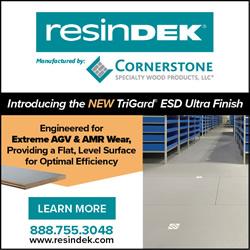SEMICONDUCTOR BOOM ACCELERATES DEMAND FOR ULTRA-PRECISE METAL PARTS
For component engineers and procurement teams, this represents both an opportunity and a challenge. How do you achieve the complexity, repeatability, and performance needed, without compromising cost or scalability?
(24th September 2025, Muellheim, Germany) The global semiconductor boom, fuelled by next-gen applications in AI, IoT, autonomous systems, and 5G, has triggered a surge in demand for ultra-precise, micro-scale metal components. As devices become smaller, smarter, and more powerful, the tolerances required in their supporting hardware are pushing the limits of traditional manufacturing technologies.
For component engineers and procurement teams, this represents both an opportunity and a challenge. How do you achieve the complexity, repeatability, and performance needed, without compromising cost or scalability?
Photo-chemical etching (PCE) is fast emerging as a key enabling technology in the semiconductor supply chain. By leveraging a burr- and stress-free chemical process rather than mechanical force or heat, PCE can manufacture intricate thin metal parts (such as shields, meshes, filters, and connector components) with micron-level accuracy and perfect edge fidelity.
At the forefront of this capability is the Micro Component Group, a strategic alliance of global leaders in PCE — micrometal GmbH, HP Etch, Etchform, and Thin Metal Parts Inc. Together, they offer unrivalled vertical integration, geographic reach, and specialist experience across high-performance sectors.
"Semiconductor production is unforgiving, there is no room for variance, no margin for error," says Jochen Kern, Head of Sales & Marketing at Micro Component Group. "That's exactly why PCE, with its repeatable precision, digital tooling, and stress-free production, is now being recognised as a gold standard for metal part fabrication in this space."
Manufacturers new to PCE are often surprised by its flexibility. The process can accommodate a wide range of materials (including stainless steels, nickel alloys, copper, and titanium) while supporting ultra-thin thicknesses and complex geometries that would be impossible or cost-prohibitive with laser cutting or stamping.
Design freedom, coupled with low-cost tooling, makes PCE particularly suited to fast-paced industries like semiconductors, where iterative prototyping and rapid scaling are essential.
"Our customers aren't just buying parts," Kern adds. "They're buying innovation capacity. PCE gives them the agility to evolve designs, the consistency to scale, and the assurance that their most critical components meet the tightest specifications."
As the semiconductor industry races ahead, the Micro Component Group invites engineers, designers, and OEMs to explore how photo-chemical etching can give them a critical edge.
www.micrometal.de
Featured Product

